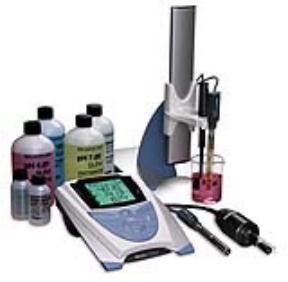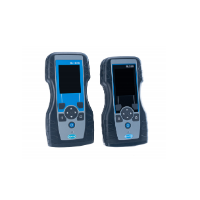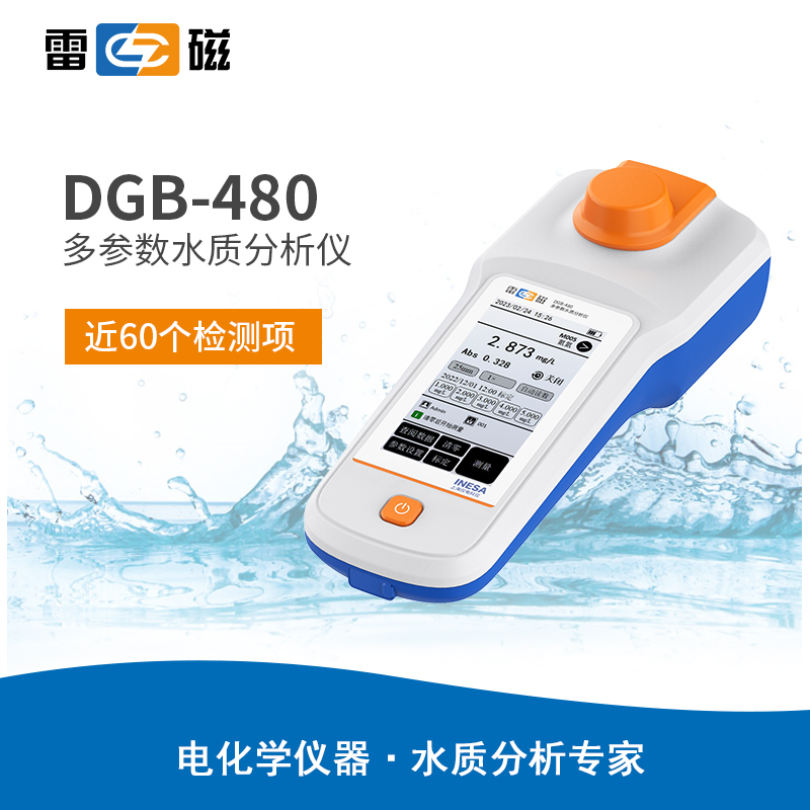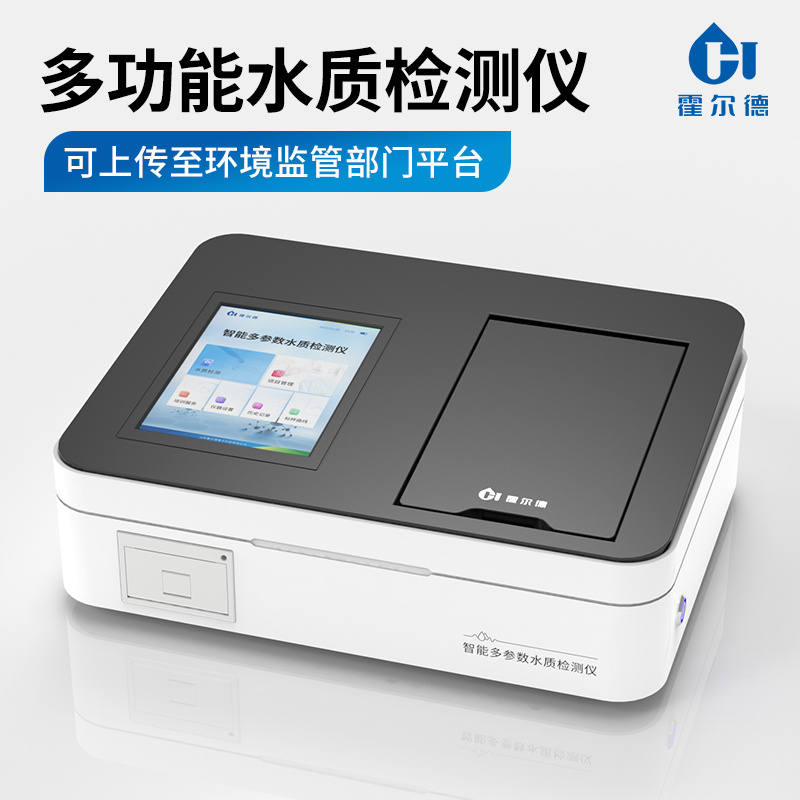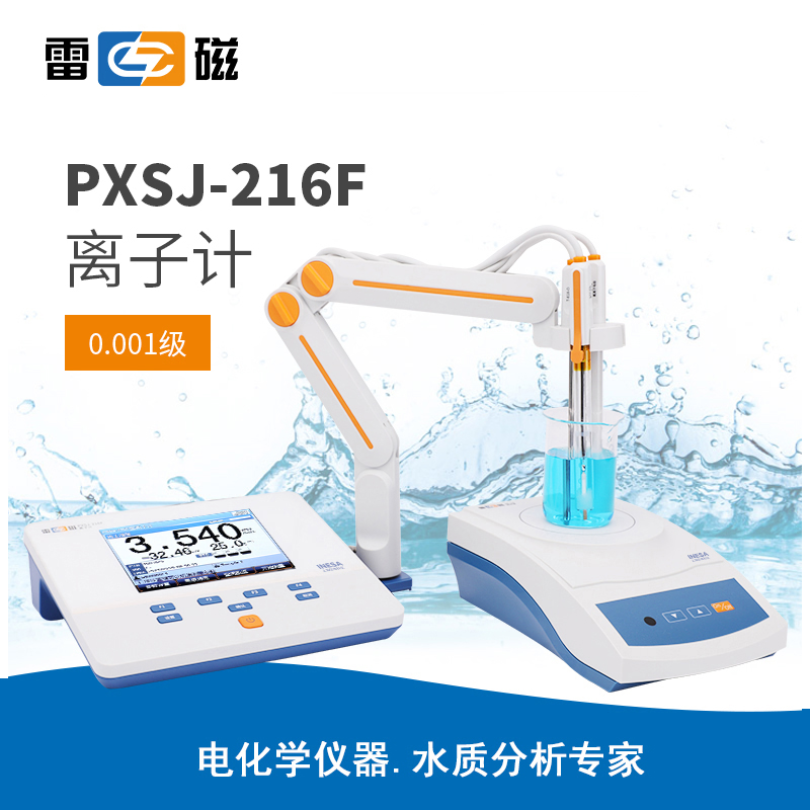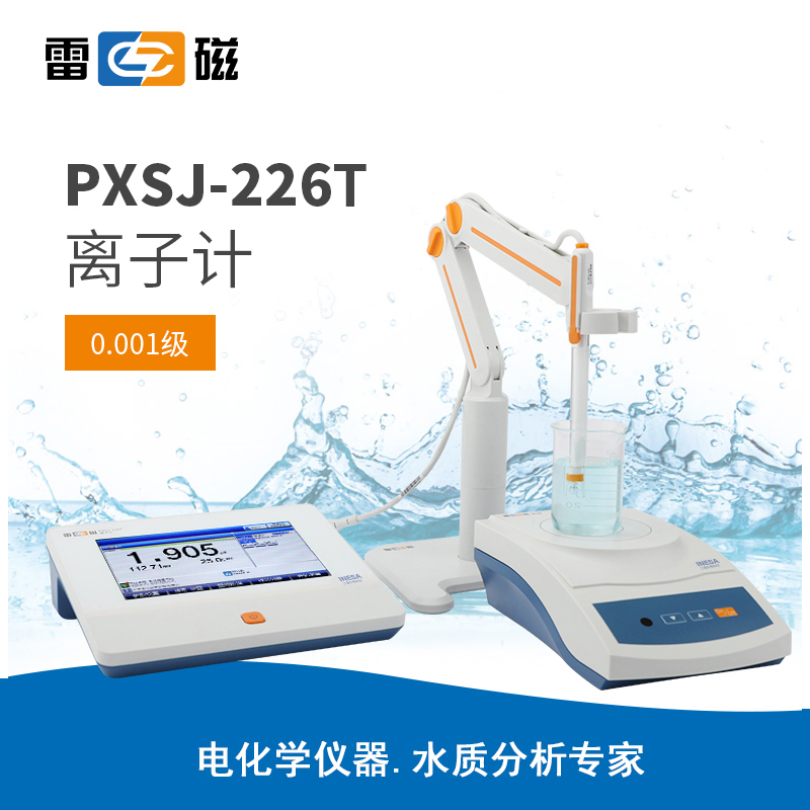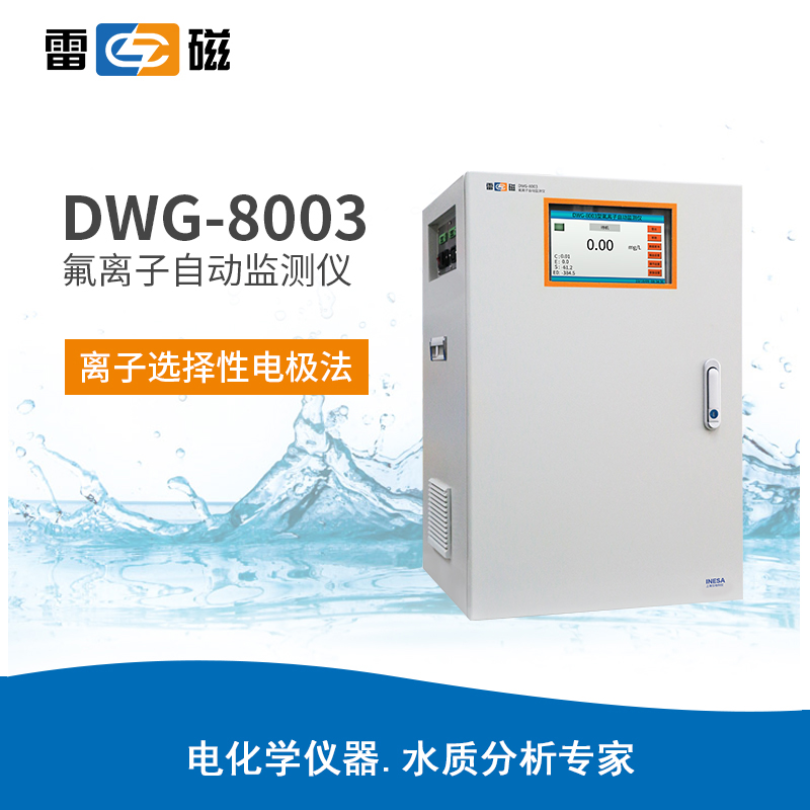本文章详细介绍了牙线中氟的测定,包括校准液、水样的准备,校准和测量过程,以及电极和仪表的维护等内容
方案详情

Fluoride inDental Floss Calibration and Analysis 1.Allow all the standards and the samples to attain room temperature for precise measurements, sincethe measurement is temperature sensitive. 2. Calibrate the meter using the 1 ppm, 10 ppm, and 100 ppm standards, stirring the standards at auniform rate. 3.Place the electrode,temperature probe and stirrer into the beaker with the 1 ppm standard suchthat the electrode tip is fully immersed in the solution. The stirrer should be positioned slightlybelow the tip of the electrode. Press the STIRRER key on the meter to turn the stirrer on. Press theCALIBRATE key. 4.Wait for a stable reading (1-2 minutes). Enter the standard value of “1.00”using the UP and DOWNarrow keys and the DECIMAL/DIGIT key. 5.Press the CALIBRATE key to accept 1 ppm standard and press the STIRRER key to turn thestirrer off. 6.Rinse the electrode, temperature probe and stirrer thoroughly with deionized water. Gently removeexcess solution from the outer sleeve of the electrode by dabbing with a clean paper tissue. Do notwipe or rub the sensing element. 7.Place the probes and stirrer into the beaker with the 10 ppm standard such that the electrode tip isfully immersed in the solution. The stirrer should be positioned slightly below the tip of the electrothe STRIRRREER RkeKde.Press y Yon nth1e meter to turn the stirrer on. 8.Wait for a stable reading (1-2 minutes). Enter standard value of“10.00”using the UP and DOWNarrow keys and the DECIMAL/DIGIT key. 9.Press the CALIBRATE key to accept 10 ppm standard and press the STIRRER key to turn the stirreroff. 10. Rinse the electrode, temperature probe, and stirrer thoroughly with deionized water. Gently removeexcess solution from the outer sleeve of the electrode. 11. Place the probes and stirrer into the beaker with the 100 ppm standard such that the electrode tip isfully immersed in the solution. The stirrer should be positioned slightly below the tip of the electrode.Press the STIRRER key on the meter to turn the stirrer on. 12. Wait for a stable reading (1-2 minutes). Enter standard value of“100.00”using UP and DOWNarrow keys and the DECIMAL/DIGIT key. 13. Press the MEASURE key to accept 100 ppm standard and to move to the measure mode of the meter.Press the STIRRER key to turn the stirrer off. 14. Rinse the electrode, temperature probe and stirrer thoroughly with deionized water. Gently removeexcess solution from the outer sleeve of the electrode by dabbing with a clean paper tissue. Do notwipe or rub the sensing element of the electrode. 15. Place the probes and stirrer in a prepared sample such that the electrode tip is fully immersed in thesolution. Press the MEASURE key on the meter; the stirrer will turn on. The ISE:mg/L icon will flashas the measurement is being made. The ISE:mg/L icon will become solid and the display value willfreeze when a stable reading is achieved. This value is logged and printed automatically and the stirrerturns off automatically. 16. Repeat steps 14 and 15 for additional samples. Upon completion of samples, rinse electrode withdeionized water and store the electrode according to the instructions in the Electrode Storage sectionof this method note. ( Water Analysis Instruments ) Tel:1-978-232-6000Dom. Fax:1-978-232-6015Intl Fax: 978-232-6031www.thermo.com/waterO 2005 Thermo Electron Corporation Fluoride inDental Floss Introduction Fluoride is incorporated in oral health products to prevent cavities. This procedure measures the amount offluoride released from Dental Floss impregnated with a fluoride compound. The direct measurement of thefluoride ion with the fluoride ion selective electrode is a well-established technique that is frequently used asa standard method of analysis. Recommended Equipment Cat. No. .Beaker watch glass 5. Electrode stand benchtop 1110001 9. Graduated cylinder (50 mL and 100 mL) Volumetric flask (100 mL) 10. Pipette (10 mL) 7. Beakers (150mL) Required Solutions Cat. No. 1. Fluoride standard, 0.1M, 475 mL 940906 2. Fluoride standard, 100 ppm, 475 mL 940907 2.Reference filling solution, Optimum Results A 900061 4. TISABII 940909 5. Deionized water Calibration Standard Preparation 1. Using a graduated cylinder, transfer 25 mL of theT 100 ppm standardISABII. into a beaker. Add 25 mL of 2. To prepare a 10 ppm standard, pipette 10 mL of the 100 ppm fluoride standard into a 100 mL volumetric flask. Dilute to the mark with deionized water. Mix well. 3.Using a graduated cylinder, transfer 25 mL of the 10 ppm standard into a beaker. Add 25 mL of TISAB II. 4. To prepare 1 ppm standard, pipette 10 mL of the 10 ppm fluoride standard into a 100 mL volumetricflask. Dilute to the mark with deionized water. Mix well. 2.Using a graduated cylinder, transfer 25 mL of the 1 ppm standard into a beaker. Add 25 mL of TISAB II. Sample Preparation 1. Place 7 meters of dental floss in a beaker. Using a graduated cylinder, add 100 mL of deionized water into a beaker. Cover the beaker with a watch glass. Leave the dental floss soaking for 24 hours. 2.R1epeat this procedure for additional measurements. Fluoride inDental Floss Results Fluoride released from the dental floss was measured in five aliquots of extraction solution. The amount offluoride per meter mg (F /m) offloss is calculated using the formula: Amount=C*V/1000*L, where C-fluoride concentration, ppm; V-volume of DI water added to dental floss (100 mL); L-length of dental floss (7meters). The data in the table below is representative of the results expected for fluoride in dental floss.mg(F/m) Solution with extract from dental floss S a m p l e # 1 : 0.176 Sample #2: 0.174 Sample #3: 0.174 Sample #4: 0.174Sample # 5: 0.173 0.174 Mean: Standard Deviation: 0.001%CV: 0,629 Electrode Storage For brief storage periods between sample measurements, store the electrode in the 100 ppm fluoride standard.The filling solution in the fluoride electrode should not be allowed to evaporate, which causes crystallization. For longer storage periods, refer to the electrode instruction manuals. Fluoride electrodes, whose response maybecome sluggish with time, can often be restored to working order by brushing the sensing element on the flattip of the electrode with fluoride toothpaste and a soft brush. There are no specific storage requirements for the ATC probe. Equipment Setup Electrode Setup-Ionplus° 1.Remove the rubber cap covering the electrode tip. 2Fill the outer chamber with Optimum Results A filling solution.34 Lift the filling solution bottle's spout to a vertical position. Insert the spout into the filling hole in the outer sleeve of the electrode and add a small amount of fillingsolution to the chamber. Then tip the electrode to moisten the o-ring at the top and return electrode to avertical position. 5. Holding the electrode by the barrel with one hand, use the thumb to push down on the electrode cap,allowing a few drops of filling solution to drain wetting the inner cone. Release the electrode cap allowing the electrode's outer sleeve to return to its original position immediately,check to see if the o-ring is moist and repeat steps 4-6 until the outer sleeve has returned to its originalposition. Add more filling solution until the amount of filling solution within the electrode body is levelwith the bottom edge of the electrode filling hole. For initial meter setup, follow the steps on the Reference Panel that is attached to the meter itself. The QuickStart Guide also contains a layout of the meter keypad for reference. The words in this method represented inall capital letters such as POWER indicates a key on the meter, and words in quotations such as“Unit”indicateinformation on the meter display. 1. Connect the electrode to the meter 2 Connect the temperature probe to the meter. 3. Connect the stirrer to the meter. .4 Press the POWER key on the meter to turn the meter on. 5. Note that the arrow on the left of the screen indicates the active line. If the top line is not active, press theLINE SELECTION key to change the selected line to the top line. Then press the UP or DOWN arrowkeys to change the measurement mode of the top line to ISE. 6. Press the SETUP key to enter ISE Setup. Press the LINE SELECTION key to select the bottom line. Pressthe UP or DOWN arrow keys to select “3”for“rES” which is an abbreviation for resolution or number ofsignificant digits. Press the LINE SELECTION key to accept setting. 7.Press the LINE SELECTION key to select the middle line, and press the DOWN arrow key to select“nLln”which is an abbreviation for non-linear blank correction. 8 Press the LINE SELECTION key to select the bottom line. Press the UP or DOWN arrow keys to select“off”for“nLln”. Press the LINE SELECTION key to accept setting. 9. Press the LINE SELECTION key to select the middle line, and press the DOWN arrow key to select“rAng”which is an abbreviation for measurement range. 10. Press the LINE SELECTION key to select the bottom line. Press the UP or DOWN arrow keys to select“HigH”for“rAng. Press the LINE SELECTION key to accept setting. 11. Press the LINE SELECTION key to select the middle line, and press the DOWN arrow key toselect“Unit”. 12. Press the LINE SELECTION key to select the bottom line. Press the UP or DOWN arrow keys to select“mg/L” for“Unit". Press the LINE SELECTION key to accept setting. 13. Press the MEASURE key to return to the measurement mode. If all steps were followed correctly the meter display will show three digits on the top line and“ISE: mg/L”to theright of the top line. The meter and electrode are now ready for calibration. Note: The Orion Benchtop Stirrer must be turned on in General Instrument Setup before analysis, please see the QuickstartGuide for instructions. Environmental Instruments Toll Free:-ww.thermo.com of of of of
确定

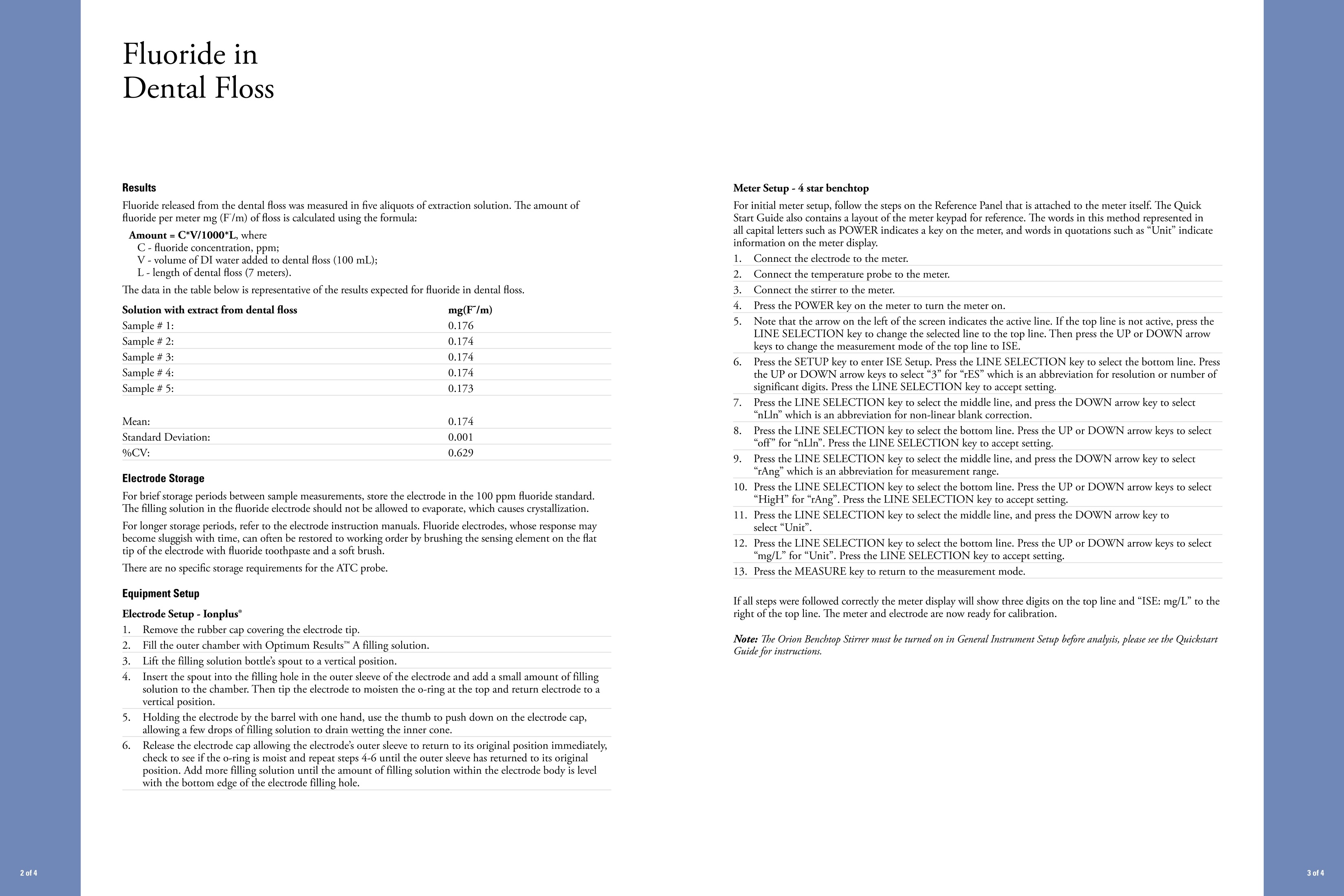
还剩1页未读,是否继续阅读?
赛默飞中国实验室产品事业部为您提供《牙线中氟的测定》,该方案主要用于生活用品中--检测,参考标准--,《牙线中氟的测定》用到的仪器有台式pH/ORP/ISE/溶解氧/电导率测量仪、Orion 4-Star台式(便携式)pH/离子浓度测量仪
推荐专场
水质分析仪/多参数水质分析仪
更多
相关方案
更多

